Life On Dead Tree …
It probably died long ago, the tree, but only matured recently to the point it has become a hot spot for various species of insect.
I have seen how long hard wood takes to break down in our relatively dry climate, so expect this was an epic death, of the tree.
And as it broke down, the bark and the wood beneath, through time and exposure and ‘activity’, it attracted more varied species that lived off the work of the ones before.
These beetles, some kind of longhorn, are doing that. Either the larva will eat rotting wood, or eat other creature’s larva, and be eaten. If you wanted to know exactly what you could.
It’s how we once learned about nature, observation over long periods of time, no quick lab fixes then. And what we discovered was invariably practical to survival and well-being, our own nature.
We looked after what served us, and weren’t careless of the context it occurred in, minimising our footprint.
Haven’t we come a long way in our progression from the simple nature …
And it all occurs in space, inside and out.
© Mark Berkery ……. Click on those pictures for a closer look
*
*
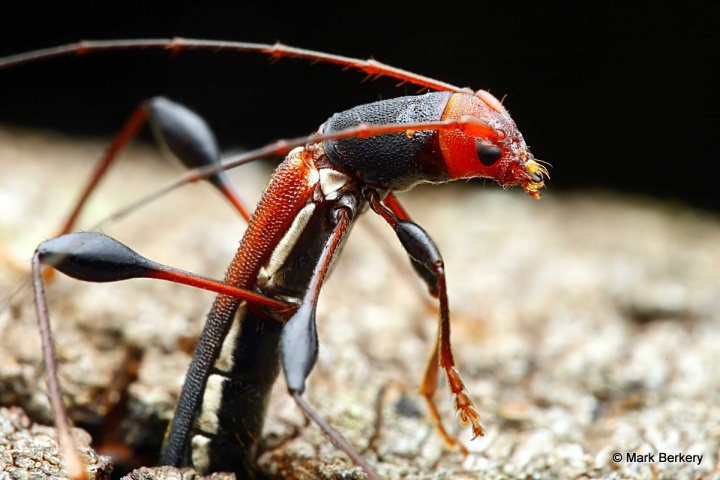
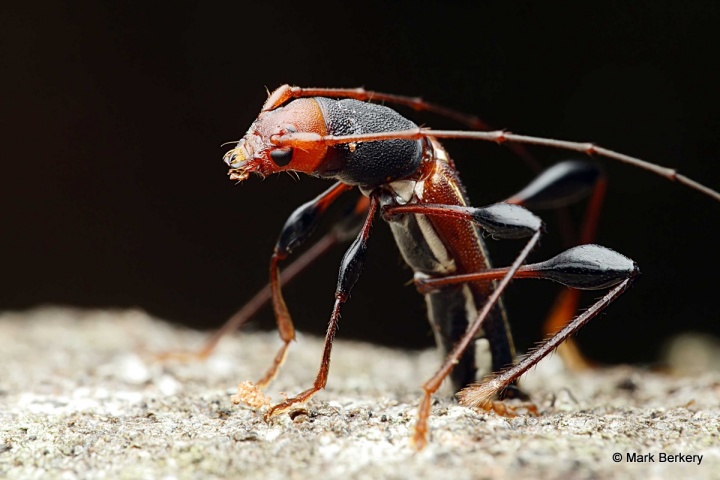
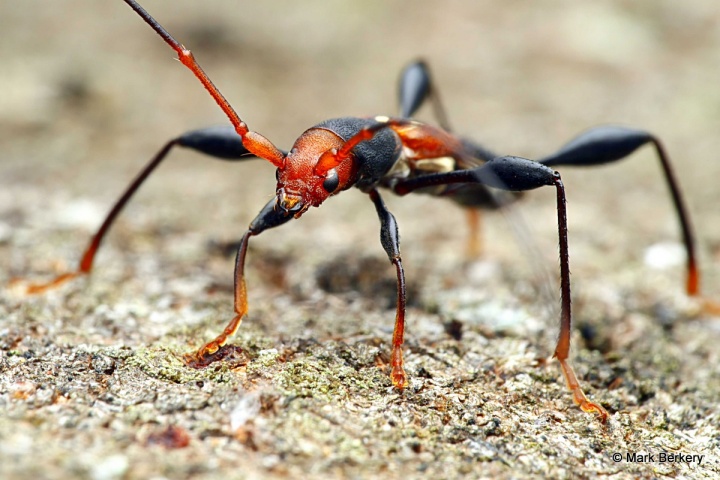

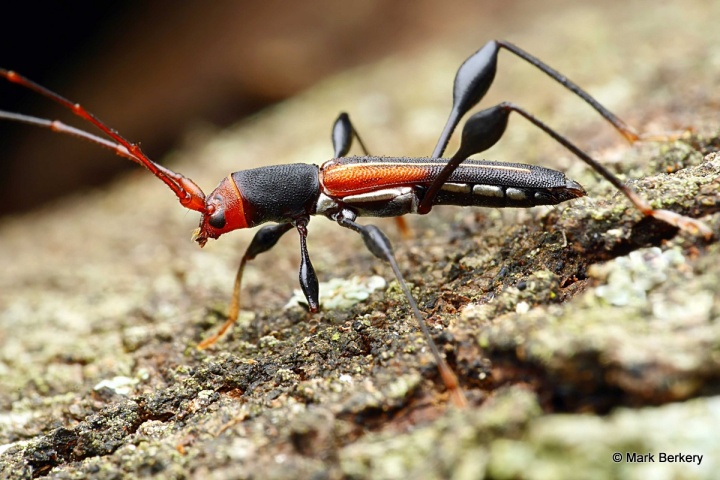
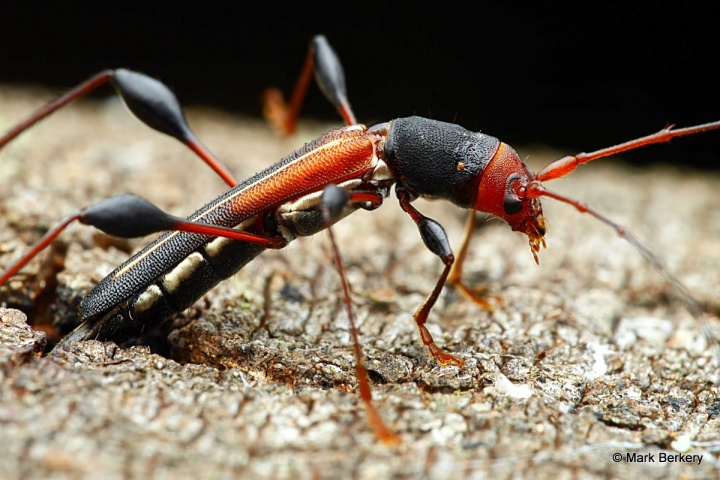
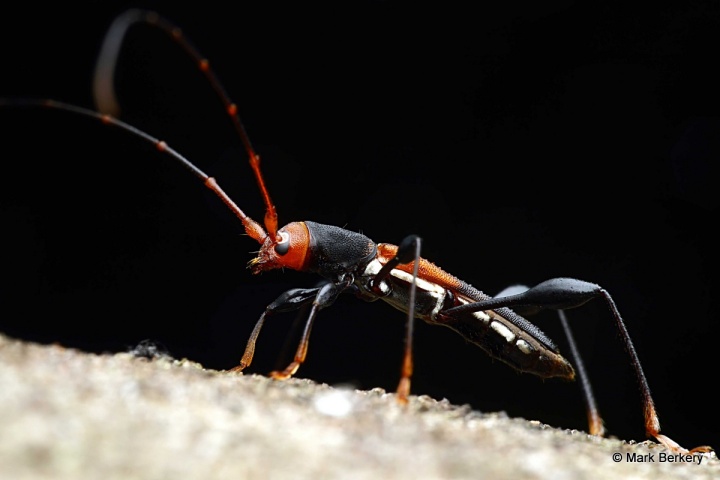
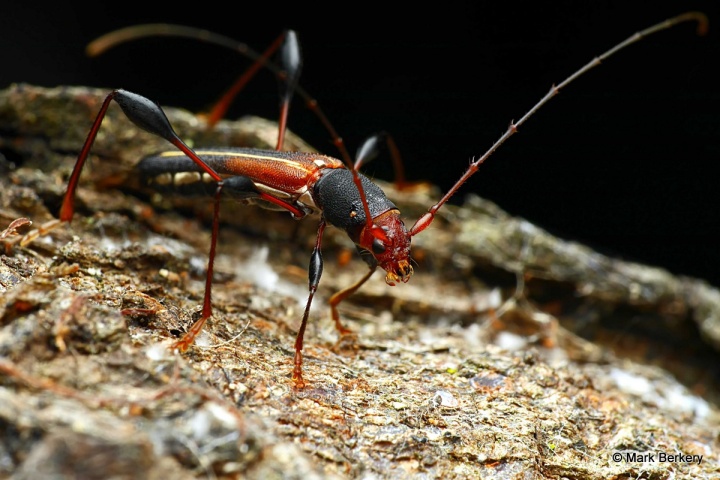

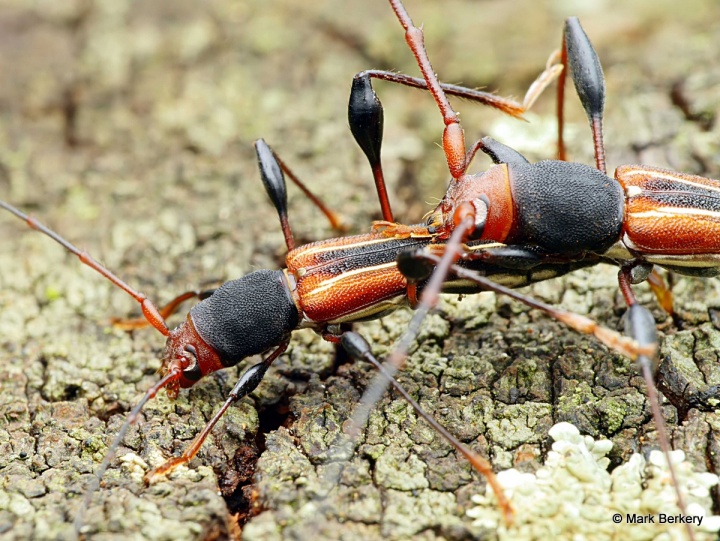

Hmm, I see this is another creature with eyes that wrap around the antennae. Whilst it may be perfectly harmless, this creature would not look out of place in a horror movie.
I’m sure they would say the same about us, if they could speak. :-)
Looks like someone else has found their name also: Decora Longicorn Beetles (http://www.brisbaneinsects.com/brisbane_longicorns/DecoraLongicorn.htm).
I’ve never seen these in the flesh before so thank you Mark. Amazing. A loving couple perpetuating the next generation.
Yes, a few found the name. I have only seen them in one place. They’ll probably never appear again, to me, like so many more.
stunning
:-)
This is the Decora Longicorn Beetle – Amphirhoe decora. They usually breed in dead Acacia trees.
Thanks Ken. The benefits of old dead wood.
Nice photos, Mark. But even more I appreciate the text: observation, connection, simplicity . . . wisdom. Yep, we have the capacity . . . if we choose to use it.
Thanks Jan. Looks like we have to use up some capacities, and take the consequences, to get to others.
Yep. That sounds like the human path of learning all right.
Yep …
Awesome macro pictures!
Thanks Noel.
What beauties, Mark! Love their colors. Have you given any thought — of course you have — to how insects experience pain? I often see one missing a leg or other body part, and they seem untroubled by it, though I’m sure at the point of amputation it felt pretty crappy. I wonder about their neurological wiring and how they might experience the sensation of injury.
Thanks Cate. I have, of course … I think the primary difference is insects, and other creatures, don’t have the capacity for self reflection outside the imperative of instinct. They do register sensation or their survival is imperilled at every turn, and that makes no sense in a world of surviving – everything does it and is designed for it, in their way. So it is just pain, and no suffering by reflection and thinking that generates emotion. And I’m sure you know how emotion can make an injury worse than it is and last longer than otherwise.
Also, look at picture 4 down. His leg is missing at the socket, where it would probably be easiest to heal/least likely to infect. It makes sense, with all those long bits to get caught up in something, they would be removable or dispensable – he’s got 5 more, and see how the antennae are segmented – not just for articulation, but also each would be dispensable at the joint – I suspect. Like spiders grow new legs.
And there’s always the exception, or at least the appearance of it, when I could have swore that bee that buzzed me in the garden was playing with me. :-)
“…that bee that buzzed me in the garden was playing with me.”
Yes, I’ve gotten this impression too with bees. I have a large community of carpenter bees living in the barn. They strike me as immensely curious creatures. They are forever flying down to look at me from all angles as I walk by. Once I came across two bees – one alive and one dead. The living bee was hover and landing, hovering and landing, hovering and dancing along side the dead. This went on for hours.
There is more to the natural creatures than rationality allows. It’s so easy to miss the simple magical when focussed on the mental or purely physical.
In the barn they would be an old established colony? I think there is a ‘cultural’ difference between those pockets of nature that survive and continually adapt to urbanisation and long established communities in rural setting. Something is lost in the urbanisation, the way a human society would lose much culture if broken up, or down.
Yep, the barn bees have been there awhile. Occasionally they take over a bird house or two, but they mostly stay in the barn.
Nice photos of a fantastic looking creature.
Thanks David. It is …
Such beautiful beetle dudes Decora Longicorn Beetle – Amphirhoe decora if you want to know the name
Thanks Firefly, names can come in handy.
Some of us like them :)
:-)
Those pictures are stunningly sharp. Really great to click on and see in close up another life!
Looks better up close, yes. Thanks Georgina.
The larva will eat rotten wood, that’s what longhorns do. It might be eaten from inside by parasitic wasps, as this species is obviously poisonous (you can tell by the colour) and no predator in its right mind would eat it.
Thanks for that. Like this https://beingmark.com/2016/03/11/old-haunts/ or this https://beingmark.com/2016/03/18/a-colourful-death/